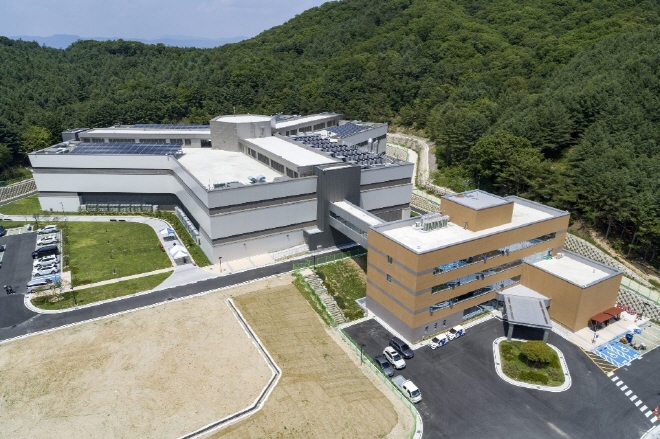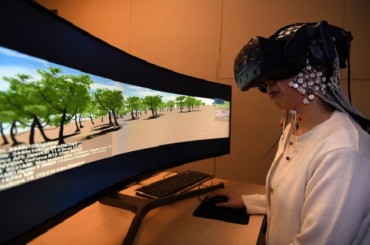CHUNCHEON, Sept. 22 (Korea Bizwire) — Samsung SDS Co., an IT system affiliate of South Korea’s top conglomerate, will expand global partnerships to diversify its business portfolio and reduce its heavy reliance on sister companies, its chief executive has said.
Hong Won-pyo, CEO of the IT subsidiary of Samsung Electronics Co., said his company has been strengthening business ties with non-Samsung affiliates by creating new revenue streams in various areas, including cloud computing, smart factories, big data and logistics.
“We aim to raise the total sales and ratio of (non-Samsung business) this year, which is a very challenging goal,” Hong said in a press briefing at a new data center in Chuncheon, 85 kilometers east of Seoul, on Friday.
Samsung SDS posted 10 trillion won (US$8.4 billion) in sales in 2018, up 8 percent from a year earlier, led by strong demand in cloud computing and analytics, its financial reports showed.
The firm’s IT service portfolio relies heavily on business with Samsung affiliated companies, but it has sought ways in recent years to diversify its portfolio at home and abroad.
The ratio of the firm’s revenue from non-Samsung affiliates rose from about 11 percent in 2017 to 14 percent in 2018, Hong said, and the company aims to raise the figure to at least 19 percent this year.
As part of these efforts, Samsung SDS said it will enhance its cloud services, which allow companies to put servers, databases and applications in virtual environments where they can be accessed remotely from anywhere at any time, without requiring data centers of their own.
The company highlighted its hybrid cloud model, a mix of its own private cloud and similar services by global leaders, including Amazon Web Services (AWS) and Microsoft, to meet the various demands of its clients.
By allowing workloads to move between private and public clouds as computing needs and costs change, the company says the hybrid cloud model gives businesses greater flexibility and more data-deployment options.
Samsung SDS has also been expanding technology collaborations with data centers in Europe to improve energy efficiency and save costs, while encouraging other companies to join its cloud platform, Hong said.
“I think many companies are transitioning from cloud migration to applying applications in the cloud, which is the second phase,” Hong said.
“We have been developing various solutions for enterprise clients to help them deal with problems when adopting various applications in the cloud.”
The Chuncheon center is the company’s fifth data center in the nation and occupies about 39,790 square meters, 5.5 times the size of a soccer field.
The company said the facility is a “software-defined data center” where all infrastructure is virtualized and delivered as a service, as well as an energy-efficient building that uses wind from the nearby mountain to help cool down the server rooms.
(Yonhap)







